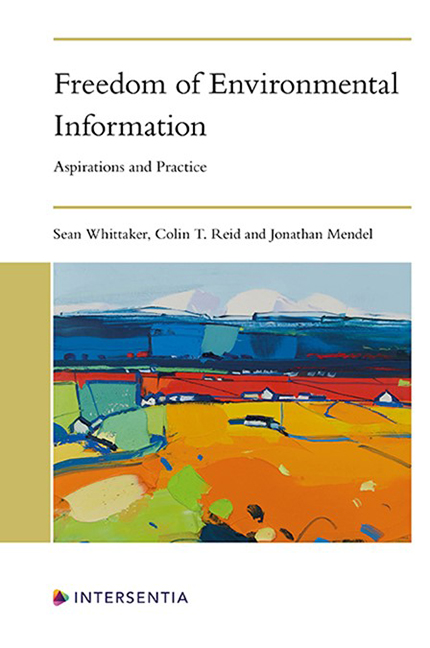Chapter 1 - Introduction
Published online by Cambridge University Press: 15 November 2023
Summary
In recent decades, the introduction of a public right to access environmental information has been acclaimed as a major achievement in improving environmental governance across the world and it is frequently asserted that this right “will improve environmental protection”. This book critically assesses that assertion, examining the operation and impact of the right in practice to see how far what happens in real life matches the assumptions and aspirations that surround the right. Ultimately this leads to an examination of the value of a distinct right to environmental information operating separately from wider rules on transparency and freedom of information.
There can be no doubt that the environment needs greater protection, not least from the overarching issue of climate change and its negative impacts on both humanity and the wider environment. Such global concerns are also felt locally in relation to climate adaptation and mitigation measures, but local concerns also focus on other issues, such as land use and urban planning matters, waste disposal, water quality, noise and smells. An increased interest in environmental matters has led to a more intense desire from the public for greater transparency and involvement in environmental governance. While this interest is seen in non-environmental issues as well, there has been a particular emphasis on transparency, accountability and public participation in the environmental context due to the increased recognition of our shared vulnerability to, and responsibility for, the Earth’s environmental degradation. It is from this recognition that the right of access to environmental information was born.
This right was created as a means of promoting the flow of environmental information between the state and the public, either through proactively publishing environmental information or disclosing environmental information on request. At the core of the right is the assumption that the disclosure of such environmental information will contribute to humanity’s efforts to slow, or even reverse, the degradation of the environment. This will be achieved by promoting the transparency and accountability of public bodies in environmental matters, but even more so by encouraging and enabling public participation in decision-making on environmental issues.
- Type
- Chapter
- Information
- Freedom of Environmental InformationAspirations and Practice, pp. 1 - 22Publisher: IntersentiaPrint publication year: 2023



